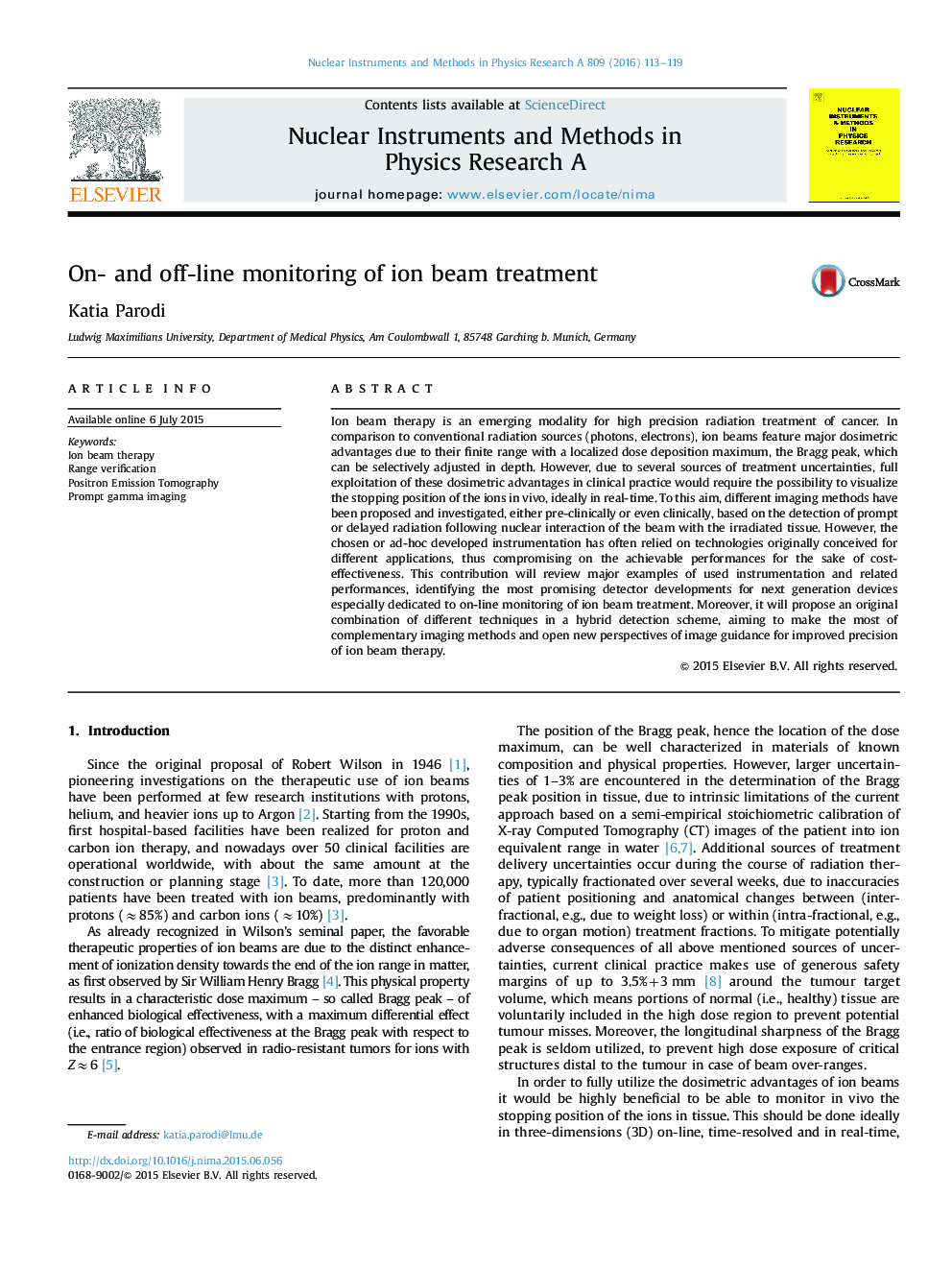| Article ID | Journal | Published Year | Pages | File Type |
|---|---|---|---|---|
| 8171261 | Nuclear Instruments and Methods in Physics Research Section A: Accelerators, Spectrometers, Detectors and Associated Equipment | 2016 | 7 Pages |
Abstract
Ion beam therapy is an emerging modality for high precision radiation treatment of cancer. In comparison to conventional radiation sources (photons, electrons), ion beams feature major dosimetric advantages due to their finite range with a localized dose deposition maximum, the Bragg peak, which can be selectively adjusted in depth. However, due to several sources of treatment uncertainties, full exploitation of these dosimetric advantages in clinical practice would require the possibility to visualize the stopping position of the ions in vivo, ideally in real-time. To this aim, different imaging methods have been proposed and investigated, either pre-clinically or even clinically, based on the detection of prompt or delayed radiation following nuclear interaction of the beam with the irradiated tissue. However, the chosen or ad-hoc developed instrumentation has often relied on technologies originally conceived for different applications, thus compromising on the achievable performances for the sake of cost-effectiveness. This contribution will review major examples of used instrumentation and related performances, identifying the most promising detector developments for next generation devices especially dedicated to on-line monitoring of ion beam treatment. Moreover, it will propose an original combination of different techniques in a hybrid detection scheme, aiming to make the most of complementary imaging methods and open new perspectives of image guidance for improved precision of ion beam therapy.
Related Topics
Physical Sciences and Engineering
Physics and Astronomy
Instrumentation
Authors
Katia Parodi,
